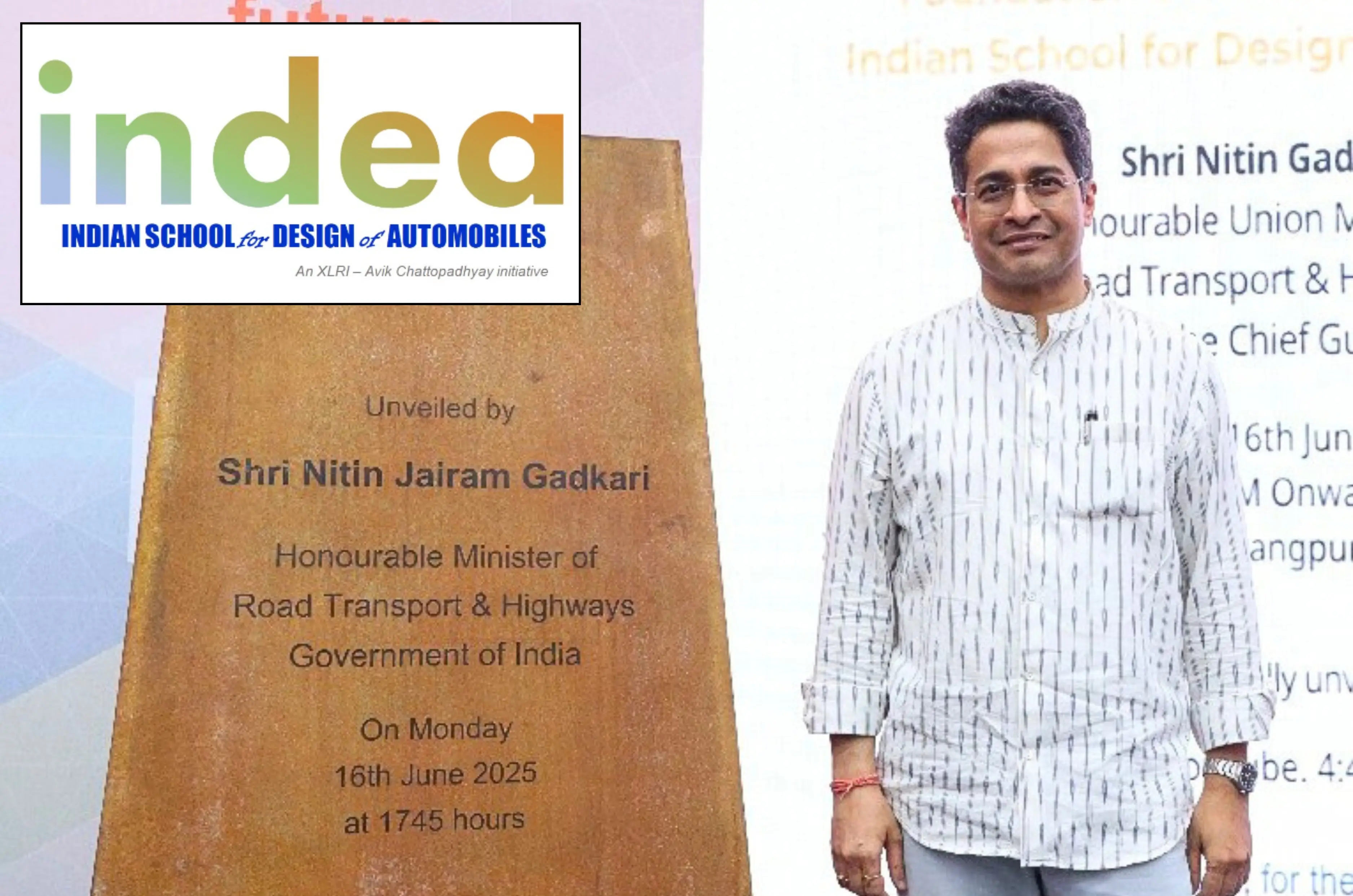The Indian School for Design of Automobiles (INDEA), India’s first automotive design school, is set to begin operations in 2026. Developed by XLRI’s Centre for Automobile Design & Management (XADM), the school will focus on developing a uniquely Indian design philosophy for the automotive sector, said Avik Chattopadhyay, founder of INDEA and chairperson of XADM.
The ‘groundbreaking’ and ‘foundation stone laying’ ceremonies took place at the XLRI Delhi-NCR campus on June 16, in the virtual presence of minister of road transport and highways Nitin Gadkari, XLRI Delhi-NCR director KS Casimir and Avik Chattopadhyay.
- INDEA courses will not have the conventional classroom format
- Final term project to be a collaborative working prototype
INDEA curriculum, classes, courses, and more
CAD, 3D modelling, clay modelling among skills that will be taught
At the core of this vision is XLRI’s upcoming school, which will not follow the conventional classroom format. “What we are building is not a classroom; we are building a working studio,” said Chattopadhyay. “Right from drawing on paper, to CAD, to 3D modelling, to scale clay modelling, to 1:1 clay modelling, to prototyping – everything will be taught there.” The curriculum will integrate design and management and be taught by global practitioners. “First is design plus management. Secondly, it’s taught by practitioners. And third, it’s in a real-world working environment,” he said. “There are no classrooms in the school, just one large hall where the 25 students will sit. Otherwise, they will be in the clay modelling area, the CAD-CAM area, the prototyping workshop, or the additive manufacturing lab.”
First year to have 25 students with faculty from Japan, Germany and India
In its first year, the centre will admit 25 students and feature faculty from Japan, Germany and India. Students will complete their two-year programme by collaboratively building a working prototype. “Last term will be a project where the entire batch of 25 students builds a working prototype. Make it. Show it to the world,” he said.
Need for an Indian design school
‘Make in India’ won’t work unless combined with ‘Design in India’, said Chattopadhyay
Chattopadhyay emphasises the need for India to move beyond merely ‘Make in India’. “‘Make in India’ won’t work unless you combine it with ‘Design in India’,” he said. “Till the time you don’t take design as an investment, you’ll always look at it as an expense. We take production engineering as an investment; we take a new assembly line as an investment. Why don’t we take design the same way?”
Creating an Indian design identity
According to Chattopadhyay, building an Indian design identity is a long-term journey, possibly stretching over a few decades. “Maybe three decades from now, we can end up establishing something called the Indian Design DNA, a very particular way of designing things or a very specific way of looking at mobility, which is very Indian,” he explained.
The XADM chairperson likens the goal to how Italian automobiles are instantly recognisable regardless of branding. “Even if you take out the Ferrari or Lamborghini logos and ask people which part of the world this comes from, there’s a high chance they’ll say Italy. There’s something in their design language that’s very typically Italian. In Italian design, there’s a certain edginess, and you need to understand the Romans culturally to grasp why Italians design their vehicles in a certain way, whether it’s a tractor, a car, or a motorcycle. That’s why a Cagiva doesn’t look like a BMW.”
Chattopadhyay believes Indian culture already offers enough aesthetic depth to inspire a unique automotive language. “We have it in our architecture, our cuisine, our music, our art, our clothes, so why can’t we have it in our automobiles?” he asked. “I’m not saying it needs to look overtly Indian, but very subliminally, the Indian design DNA should creep in, possibly in the way you create your interiors, in the kind of fabrics you use.”
He also wants industry stakeholders to realise the commercial value of good design. “Design is not necessarily expensive. If the right investments are made, design is hugely profitable,” he stressed. “Look at the Tata Punch. People buy it largely because of its design, not just externally but also internally. And you’re selling tonnes and tonnes of that vehicle. So, you profit.”
India needs more collaboration between automakers, studios and research organisations to truly unlock its design potential, Chattopadhyay added. “Whether it’s an automaker, a studio, or a research organisation – that collaboration is very much required to bolster our own capabilities in design.”
Also see:
Renault Group boss Luca de Meo resigns
Rare earth supply puts Indian car production ‘on notice’
Luxury EV sales grow 66 percent year on year in Jan-May 2025


